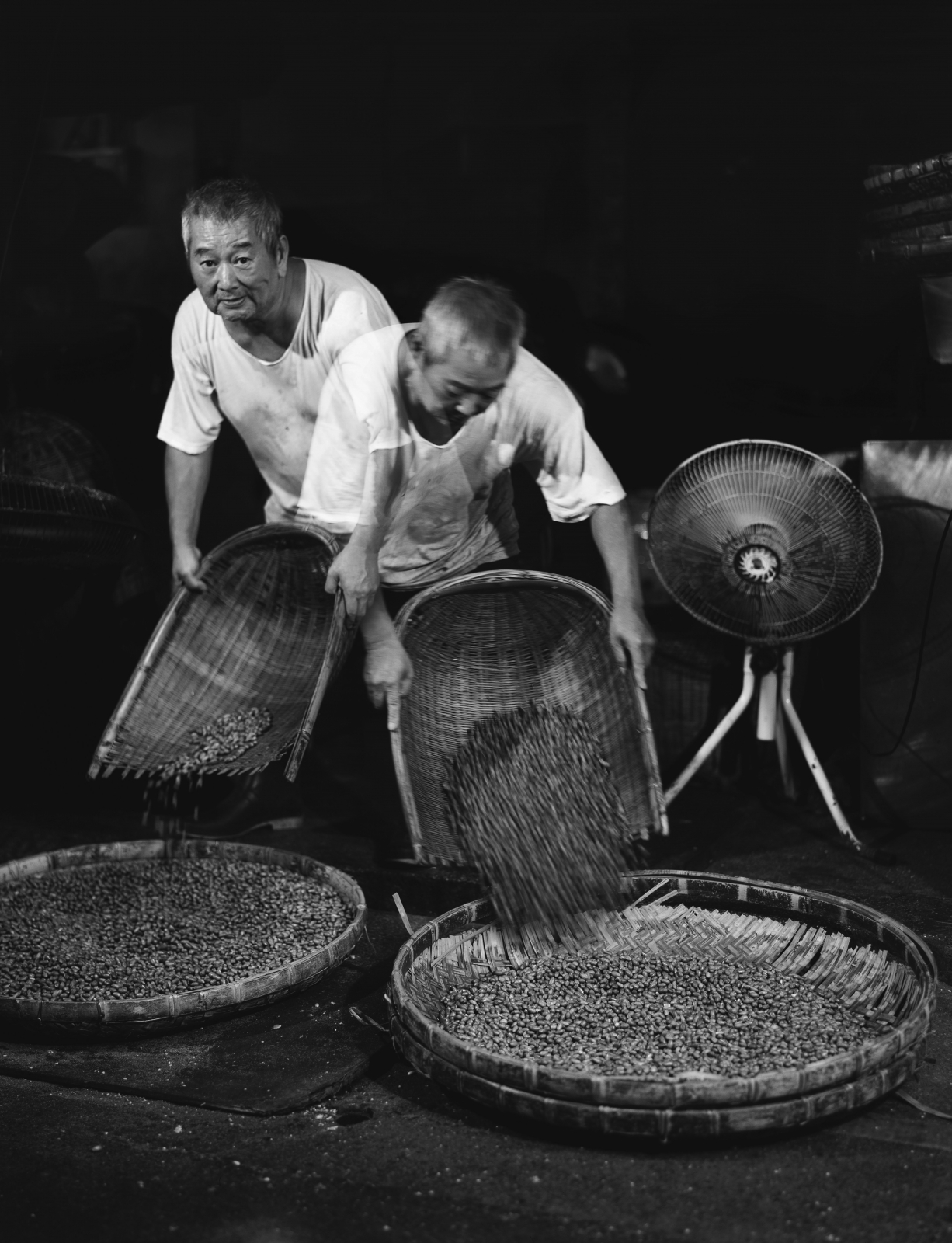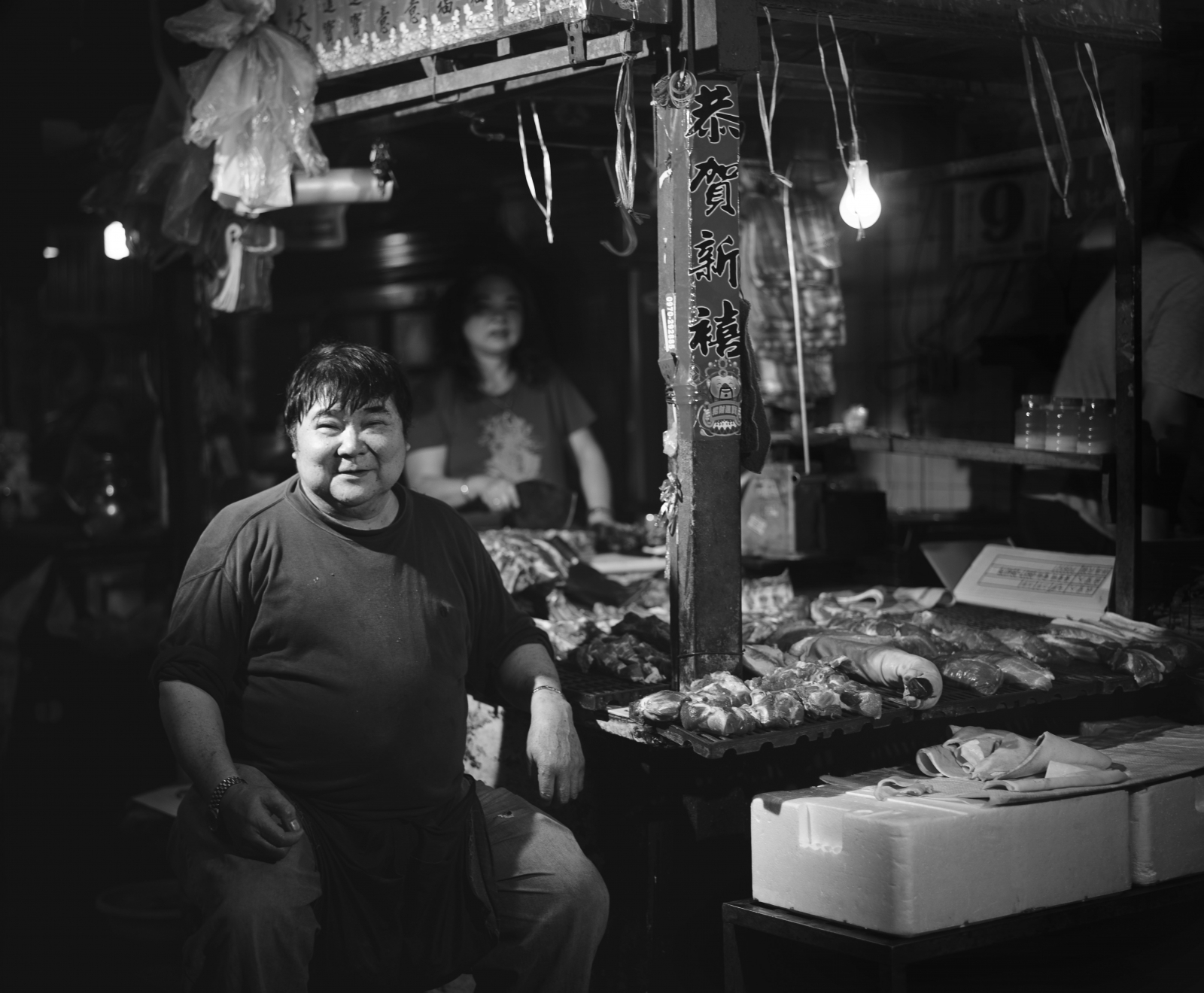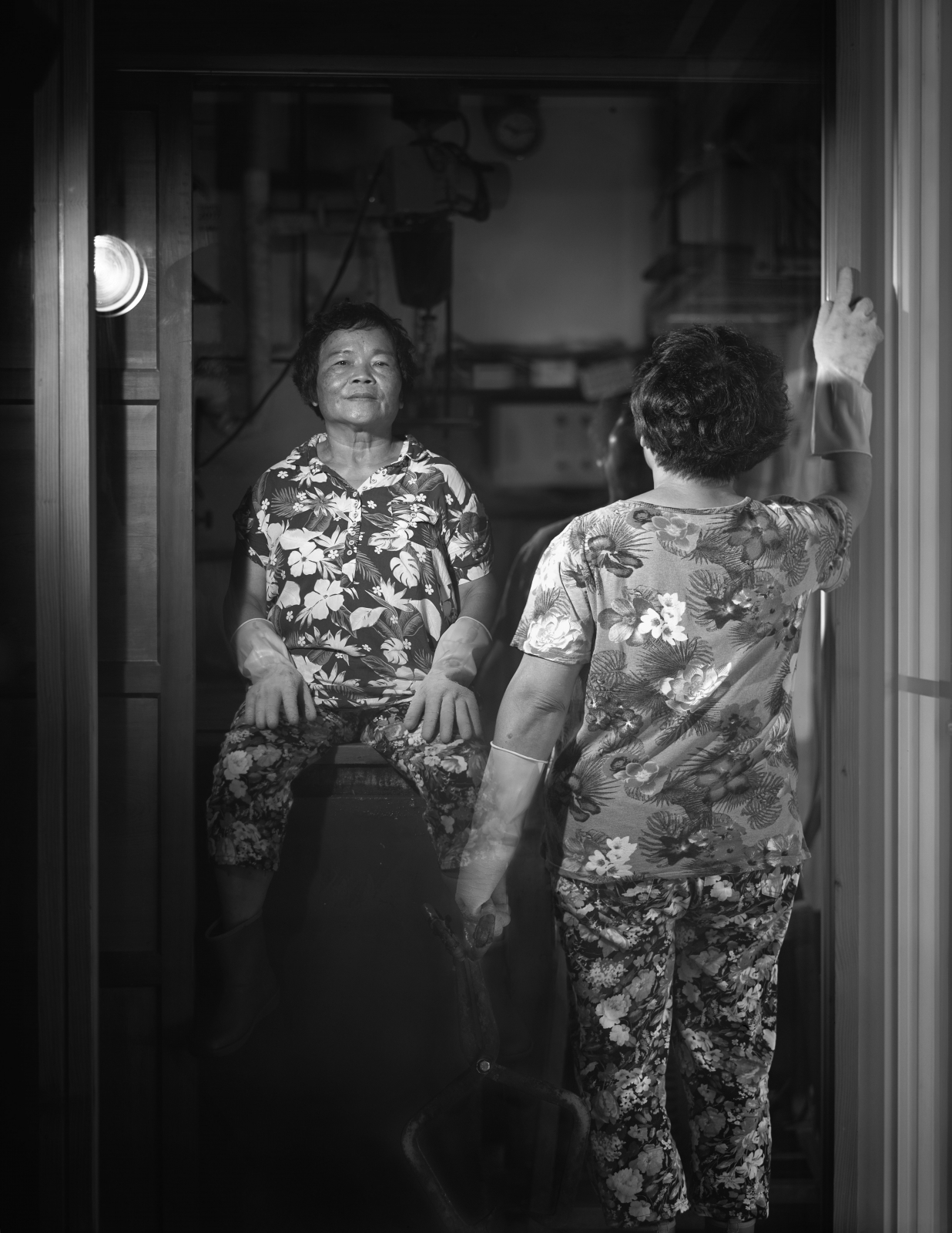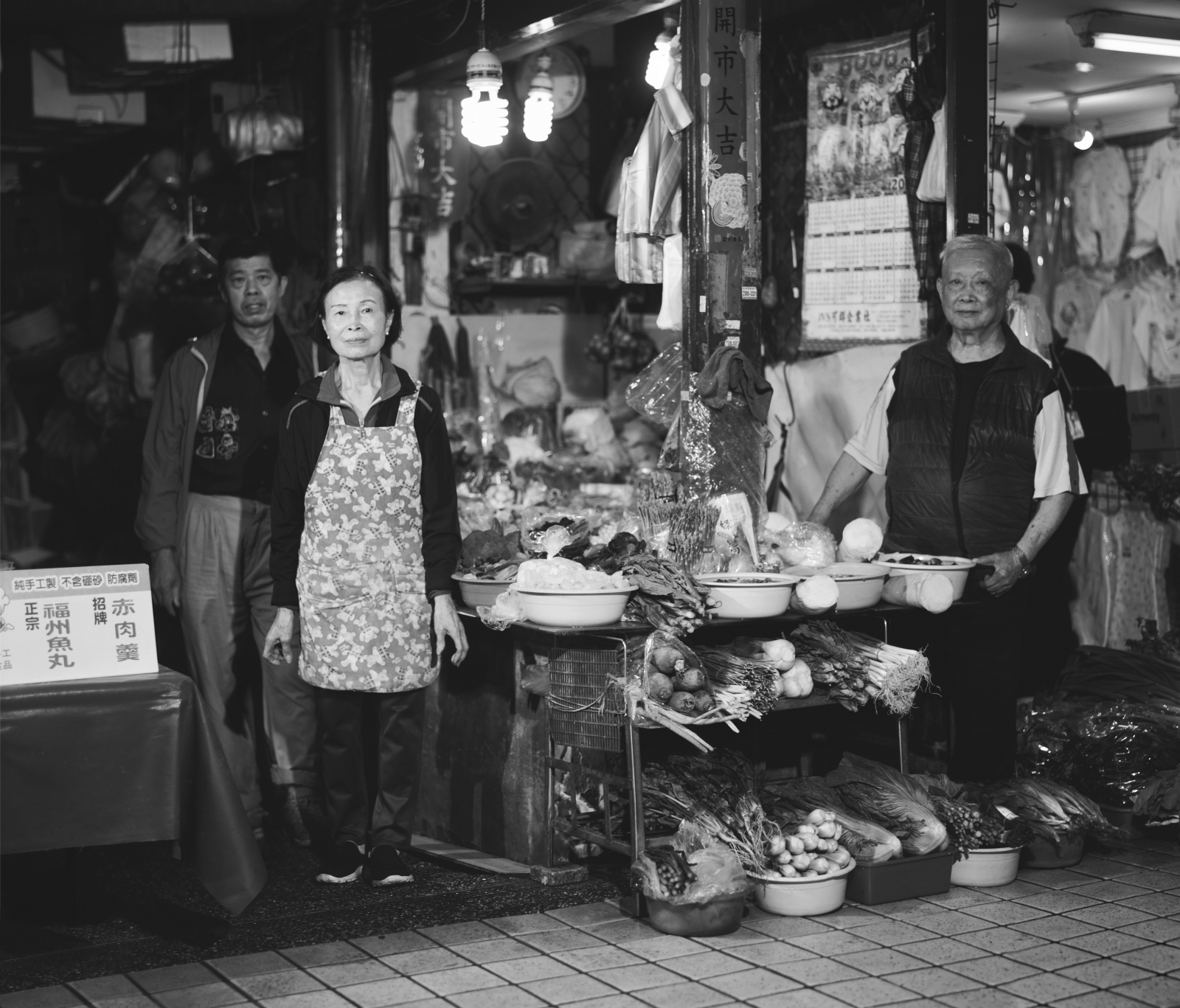



©陳永賢
| 斗室棲居─ 花生間、黑肉攤、製冰室、蔬菜攤 2019 攝影、黑白、藝術微噴、無酸裝裱、鋁框 124.5x161.5cm 單頻道錄像、黑白、靜音 7'33"、11'54"、11'25"、16'55" |
In Search of Re-Habitat and Material Memory Series ─Peanut Room, Meat Stall, Ice Factory, Greengrocer’s Stall 2019 Photograph, black-and-white, giclée, acid-free framing, aluminum frame 124.5x161.5cm Single-channel video, black-and-white, mute 7'33"、11'54"、11'25"、16'55" |
作品簡介 / 創作自述 About Artworks
《斗室棲居》系列作品思考人與空間的關係,透過棲居之所的凝視視角,牽引個體生活中的空間記憶,以及身體移動下的生命空間。藉由傳統市場的空間量測,勾勒身居於方寸空間的人物樣貌,召喚出長期以來被視為歷史及社會事件發生的背景,未被賦於具體填充的生活容器。
畫面中的人物,獨處在景框般的空間裡,就像一齣獨幕劇,映演著一生傳奇故事。從人與空間的聚合來看,簡陋的小室空間,容納著一種自我內部情感,同時存在著時空交錯的兩種維度,帶有空間裡不同的感受和經驗。看得見的部分,是人物身上所散發的堅毅神情和執念;看不見的部分,則是人物在窘迫空間棲居一生,建構著自身隱微的生命歸宿與未來想像。
窄小的斗室,是一處自我長期生活與生存的棲息狀態。在這樣的空間裡,不斷被提醒,佈滿了過渡與流動性的日常光譜,與身體空間所產生的棲居關係,彼此互有牽絆而依存的現實。這些細節,同時意味著一種無法脫離空間表徵的影響,都與日常的身體勞動與社會形成緊密關連。傳統市場的職人終其一生,所投射的不僅是個體的恍惚歲月,在社會流動的語境中,人的棲居與異質空間狀態同時並列,指涉生活條件與生命存在的演變歷程。
This series is intended to address the relationship between spaces and human beings. Focusing its gaze on people’s dwellings, this series evokes individuals’ memories of the spaces for physical movement in their quotidian existence. By measuring the space of this traditional market, this series presents vivid portraits of the vendors in their respective stalls, and therefore outlines the background against which history and social events take place, a receptacle of life that has yet to be filled.
Each character in the composition, while alone in a frame-like space, resembles a one-act play about his/her real-life legend. From the perspective of human-space convergence, the small, humble space accommodates a kind of inner emotion interlaced by the temporal and spatial dimensions that create different feelings and experiences. The visible part comprises the characters’ determined look and perseverance, whilst the invisible part features the characters dwelling in narrow spaces where they strive to construct their own final destinations and imaginations of the future.
Each cramped room encapsulates a character’s life and survival. Such a space brims with hints about the everyday spectrum of transition and fluidity. The physical and corporeal spaces stand in an intertwined and interdependent relationship of dwelling to each other. These details also imply an influence that cannot be separated from spatial representation, and they are intimately bound up with daily physical labor and society. What the workers in this traditional market have projected throughout their lives are not just their personal halcyon days. In the context of social mobility, human dwelling is juxtaposed with heterogeneous spaces, which refers to the evolution of living conditions and the struggle for existence.
關於藝術家 About Artist

©陳永賢
陳永賢
生於臺灣,畢業於國立臺北藝術大學美術系學士、美術研究所碩士,以及英國布萊頓大學藝術博士。創作主軸探討身體與社會、人與環境、自身與他者的流動關係,長期關注社會群體生活中的個體行為,作品反映社會現象及矛盾等議題。曾舉辦個展包括《身體之歌》、《人層迴圈》、《他者之他》、《闢徑》和《隱遁者》等,作品曾受邀於國內外美術館進行超過七十餘次的展出,也曾到美國Watermill Center進行駐村;曾獲英國貝克獎、加拿大楓葉銅楓獎。
Yung-Hsien Chen
Born in Taiwan, Yung-Hsien Chen earned his bachelor’s and master’s degrees in fine arts from the Taipei National University of the Arts. He then obtained his doctorate in fine arts from the University of Brighton in the United Kingdom. His oeuvre revolves around the fluid relationships between the body and society, people and the environment, as well as between self and others. He has paid long-term attention to individual behavior in social communities, which is materialized in his works that reflect the issues concerning social phenomena and conflicts. His major solo exhibitions include The Song of Body, One in a Loop, Into/Out of the Other, Routes in/Outside, and The Recluse. He has been invited more than 70 times to present his works in art museums at home and abroad. He was also an artist-in-residence at the Watermill Center in the United States, and the winner of the Back’s Future Prize for Film and Video, London and the Bronze Maple of the Maple Leaf Award, Toronto.
